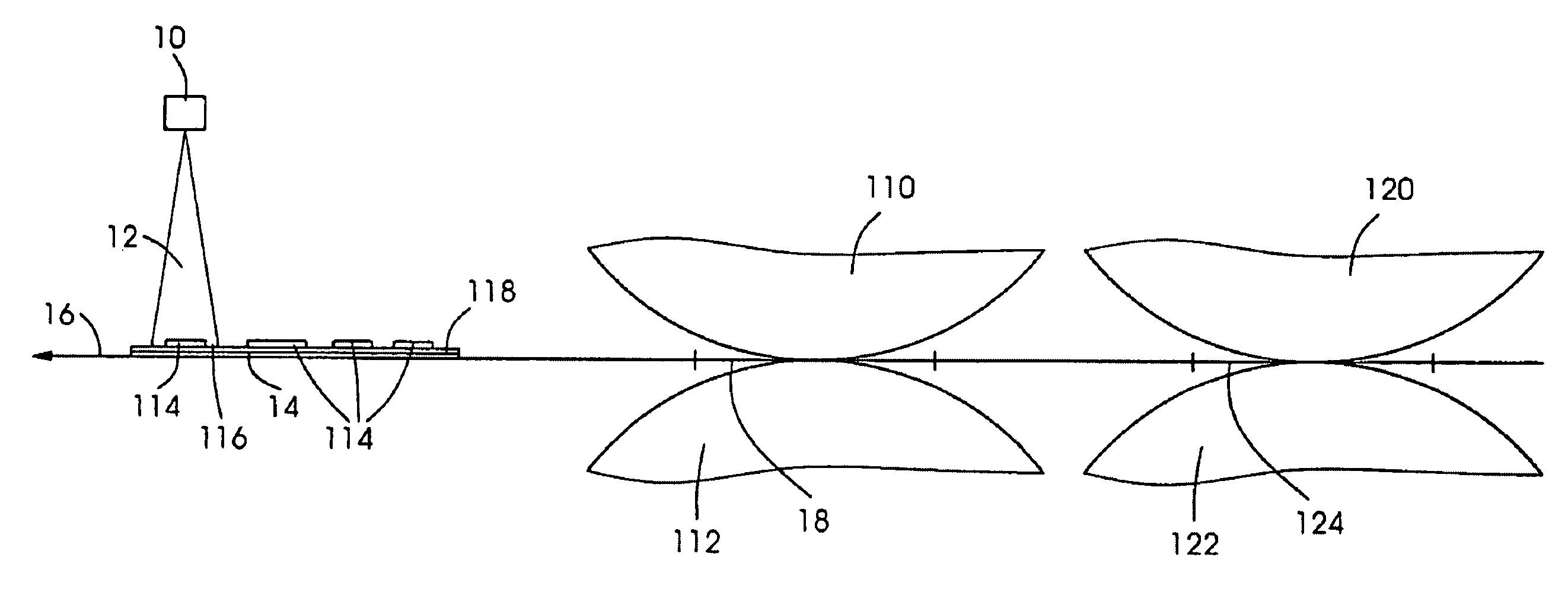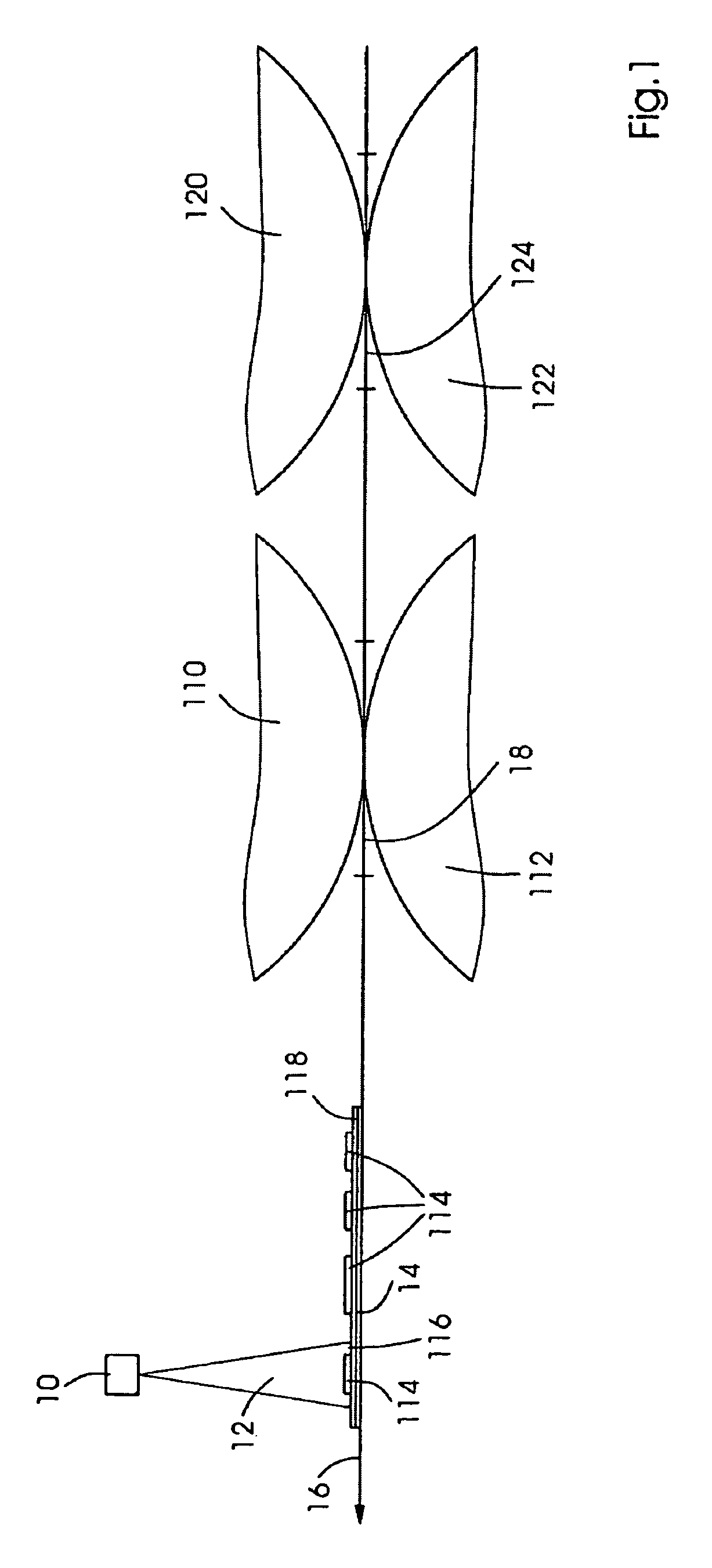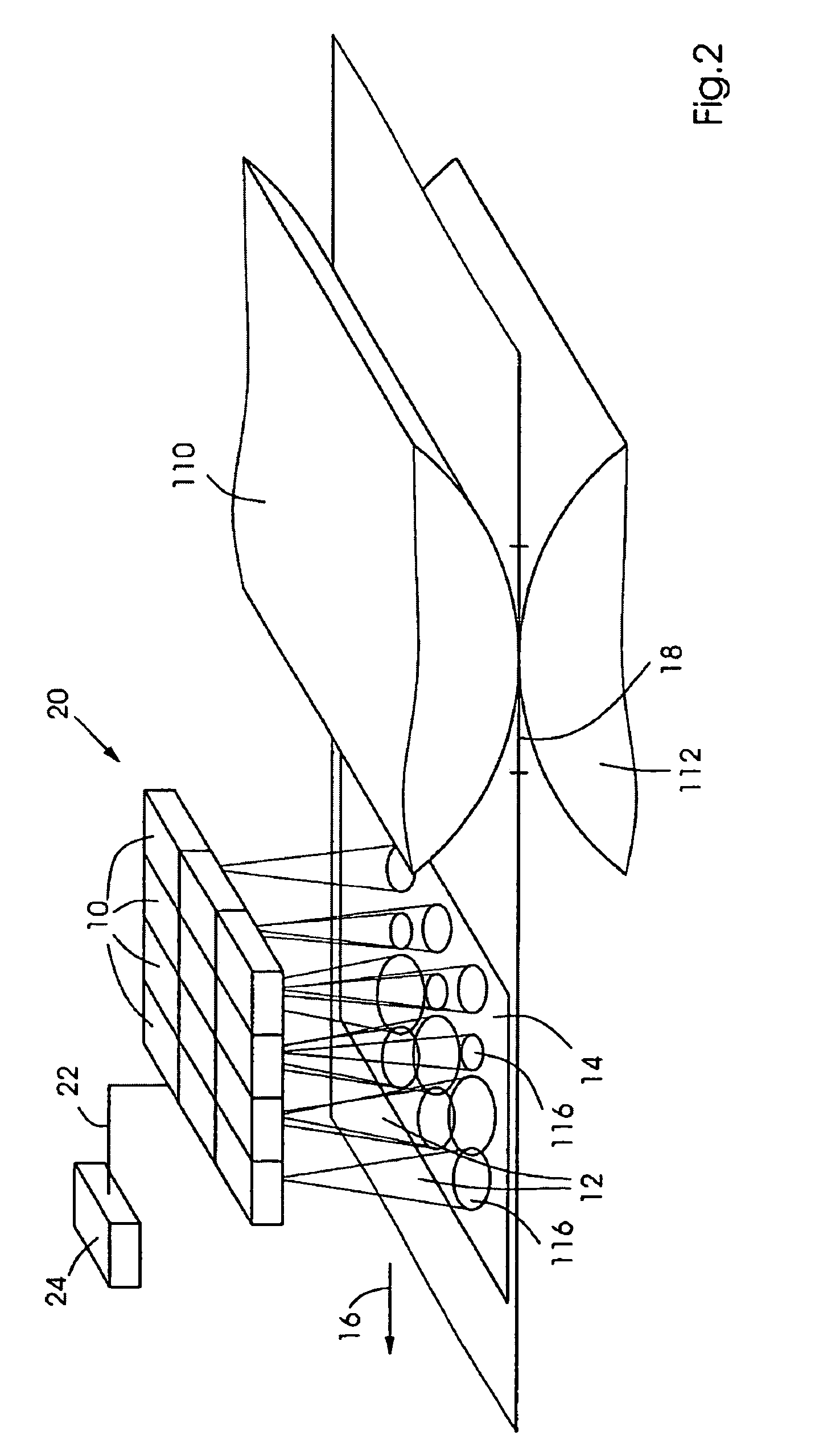Method for drying a printing ink on a printing substrate in a printing press, and a printing press
a printing press and printing substrate technology, applied in printing presses, office printing, printing, etc., can solve the problems of increasing the environmental impact, time-consuming to dry a processed printing substrate, printing ink being set, etc., and achieve the effect of facilitating the drying of printing ink
- Summary
- Abstract
- Description
- Claims
- Application Information
AI Technical Summary
Benefits of technology
Problems solved by technology
Method used
Image
Examples
Embodiment Construction
[0044]FIG. 1 shows a schematic representation for elucidating a specific embodiment of the drying method according to the present invention. A radiant energy source 10, in particular a laser, preferably a diode laser or solid-state laser, is configured within a planographic printing press in such a way that light 12 emitted by it is incident to a printing substrate 14 along its path 16 through the planographic printing press at a third position 116, which is situated downstream from a first position 18, in this case a printing nip. While in FIG. 1, printing substrate 14 is shown exemplarily in a sheet shape, the printing substrate may also be guided in a web shape through the planographic printing press. The orientation of path 16 of printing substrate 14 is characterized by an arrow. The path shown here is linear, but is not restricted thereto, and may likewise take a generally curve-shaped or non-linear course, in particular a circular arc. First position 18, here the printing nip...
PUM
 Login to View More
Login to View More Abstract
Description
Claims
Application Information
 Login to View More
Login to View More - R&D
- Intellectual Property
- Life Sciences
- Materials
- Tech Scout
- Unparalleled Data Quality
- Higher Quality Content
- 60% Fewer Hallucinations
Browse by: Latest US Patents, China's latest patents, Technical Efficacy Thesaurus, Application Domain, Technology Topic, Popular Technical Reports.
© 2025 PatSnap. All rights reserved.Legal|Privacy policy|Modern Slavery Act Transparency Statement|Sitemap|About US| Contact US: help@patsnap.com



